With a history that spans 2,500 years and roughly 140 historical and architectural monuments to its name, it should come as no surprise that there are many things to see and do in Bukhara. This ancient city in Uzbekistan is a treasure trove for those fascinated by culture, history, and tradition. These elements are so prominent in modern-day Bukhara that the city’s historic center was named a UNESCO World Heritage Site in 1993.
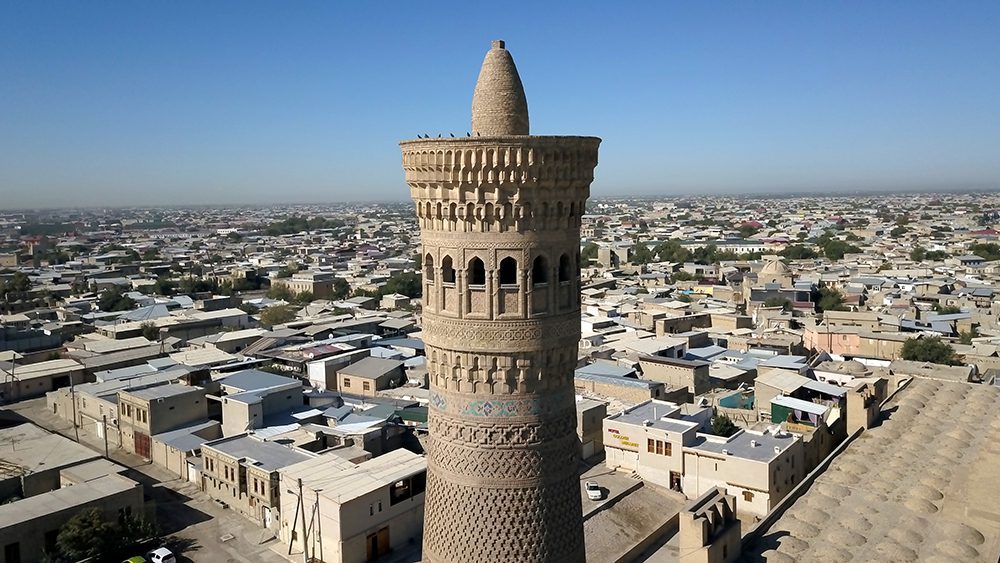
Due to its position along the Silk Road, Bukhara grew into a center for culture, trade, and scholarship. With over 350 mosques and 100 religious colleges within its boundaries, the city was also a center for religion. In fact, Bukhara became the Islamic World’s second-most important intellectual center after Baghdad during the Samanid Empire. Bukhara also became known for its long, rich history of spawning and cultivating expert artisans, who used wood, copper, bronze, silk, wool, and more in their crafts. The stunning craftsmanship that became traditional many centuries ago is still alive and thriving in the city today.
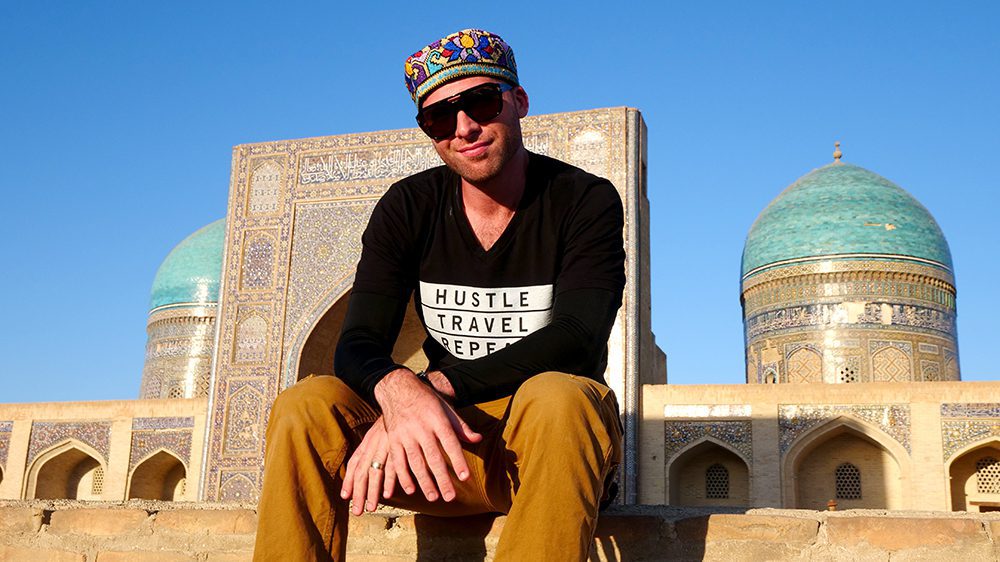
Bukhara was an embarrassment of riches for me when I visited in August of 2019. I was honestly blown away by the dedication and talent I saw on display in its handicraft markets. The food I ate there was exceptional and was like tasting thousands of years of Uzbek culture. The history buff in me was like a kid in a candy store as I explored its ancient sites. And the fact that I was walking the same streets walked by Marco Polo when he visited the city in the 12th century even furthered the connection I felt to its past. These are the top 10 things to see and do in Bukhara, Uzbekistan.
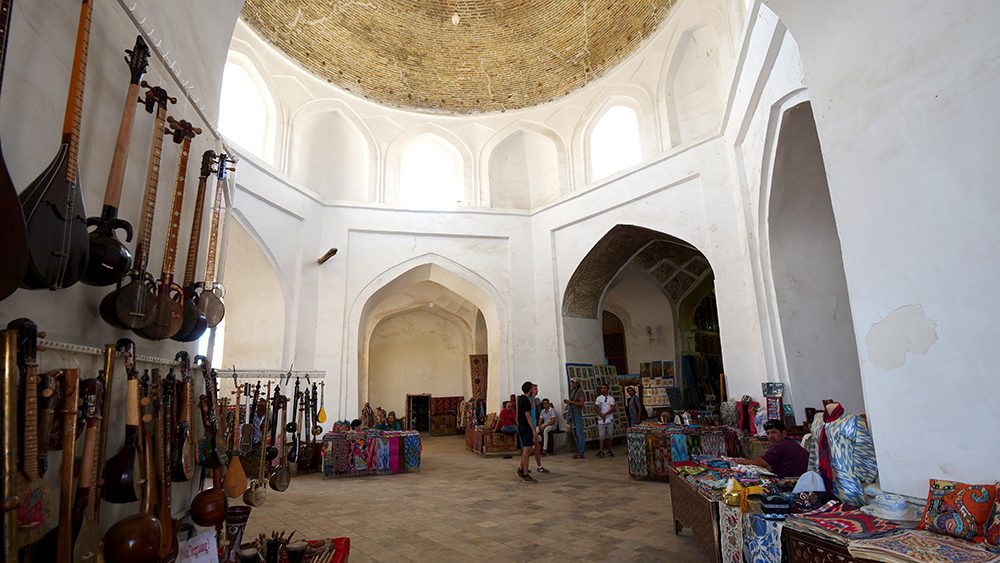
Shopping the bazaars of Bukhara is a must, even if you’re not the shopping type. My first official excursion through this historical city found me exploring a fascinating bazaar on my way to Labi Hauz Restaurant. There, I came across vendors selling handmade items including jewelry, hats, artwork, and other handicrafts. You can also buy clothing like dresses, and other items such as bags, musical instruments, and belts.
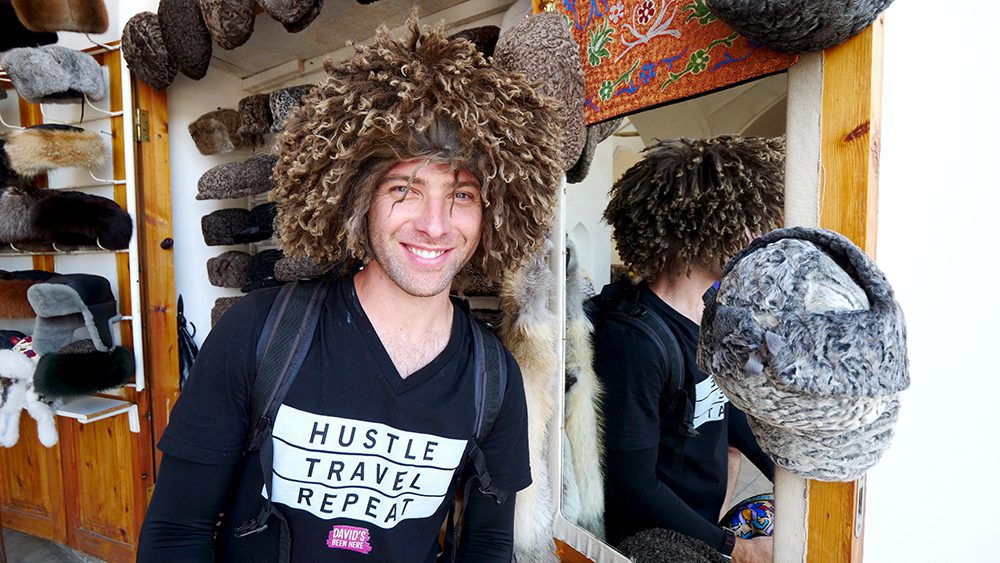
This particular bazaar felt almost like a mosque. It was wide-open and had lots of air flowing through it, which made browsing in the August heat much more tolerable. Throughout the city, you can also find vendors selling gorgeous, handmade ceramic plates. They’re incredibly affordable at less than $15 USD and the amount of detail in them is astonishing.
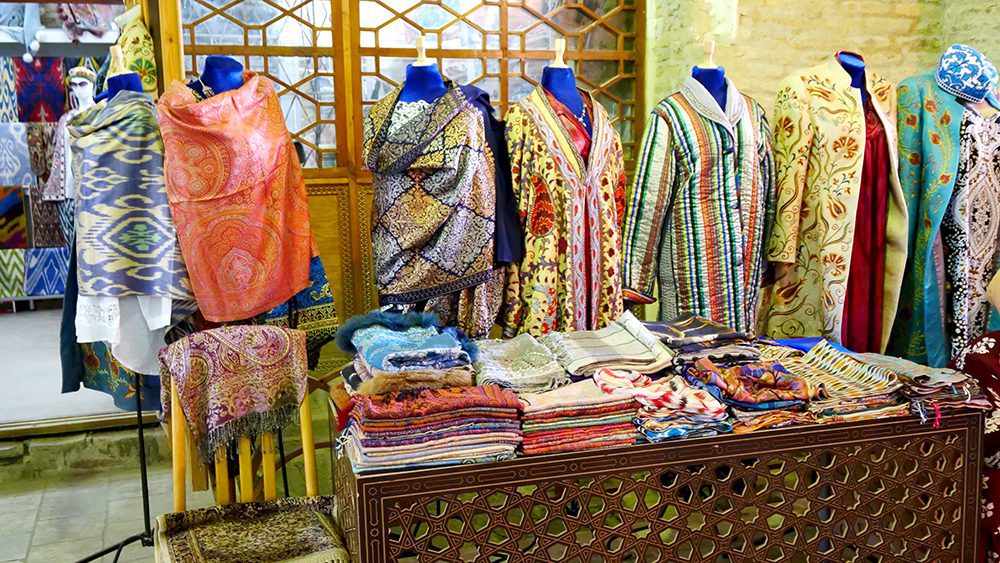
One of the highlights of the beautiful, domed Toqi Telpak Furushon Bazaar are the breathtaking handmade rugs, carpets, and other handmade items you’ll find. I suggest browsing the markets and bazaars, as it’s not hard to find something that will catch your eye.
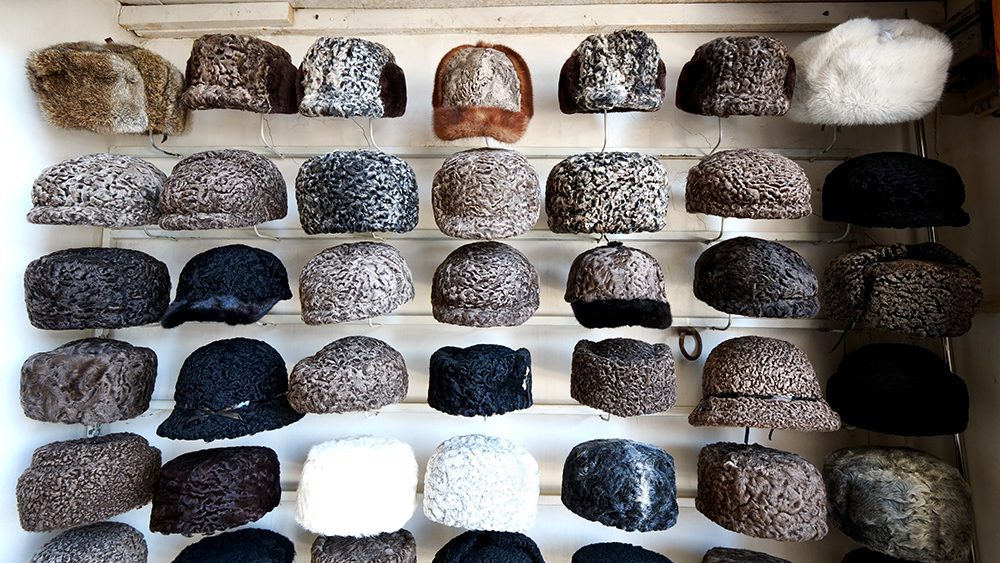
Remember, in Uzbekistan, craftsmanship is extremely important, so not only will you be supporting the local economy by shopping, you can also rest assured you’re buying high-quality goods you’ll be able to enjoy for many years to come! Also, don’t be afraid to haggle with the vendors. It’s part of the culture in Uzbekistan, and many vendors will happily give you a deal, especially if you buy multiple items from them.
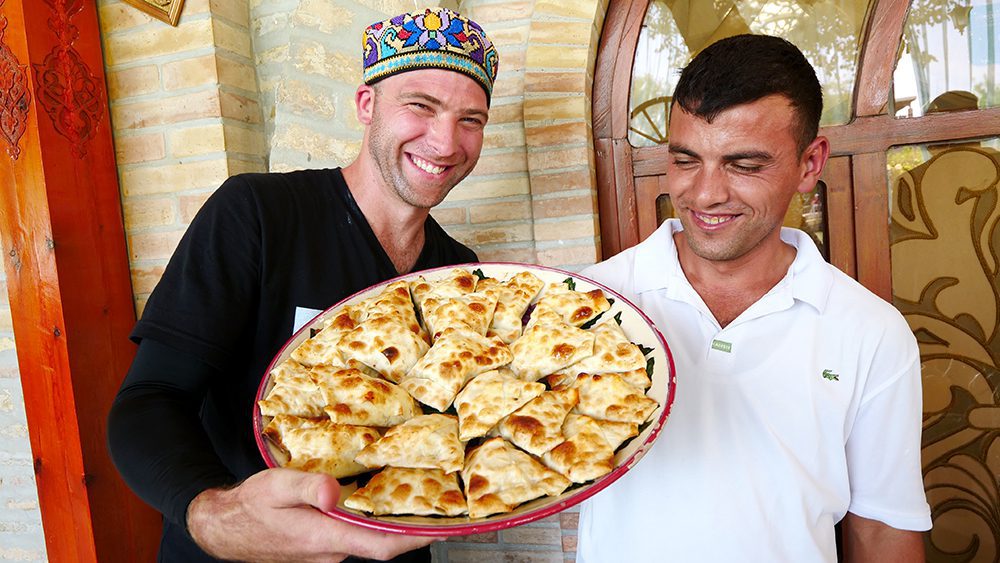
Lyabi-Hauz Restaurant is a cozy and colorful restaurant located on B. Nakshbandi Street in Bukhara. This chaikhana (or teahouse)-style eatery boasts an indoor dining room as well as outdoor seating around a beautiful, man-made pond. This pond, called a hauz, is where the restaurant gets its name. The alfresco dining and pleasant atmosphere are the icing on the cake, as the restaurant’s food also does not disappoint. Dining there is one of the top things to see and do in Bukhara for a reason!
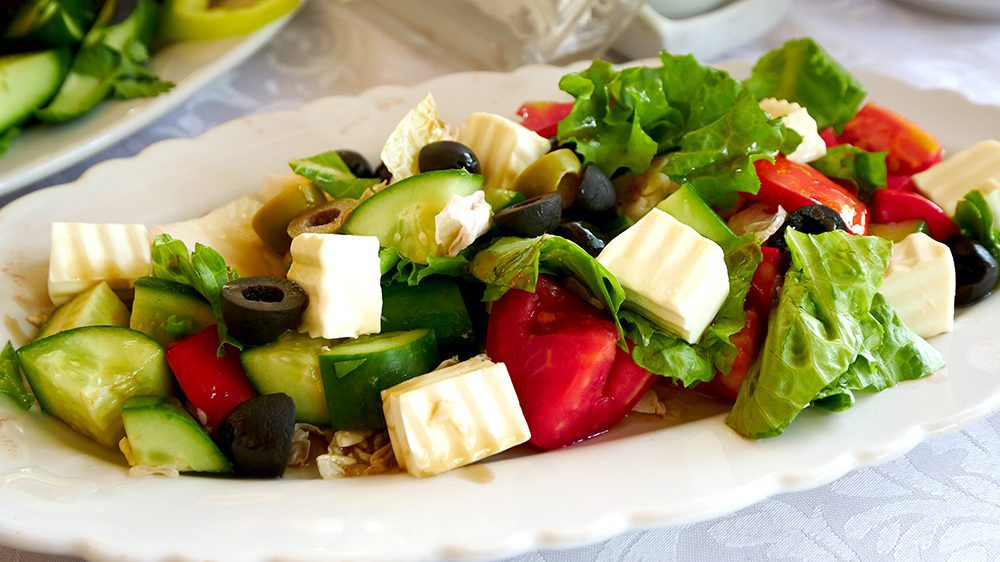
I recommend beginning your meal with several different salads. There is a fantastic eggplant, which I recommend having with the sweet yogurt sauce. I also enjoyed a salad that was a delightful mix of beets, meat, and fried potatoes.
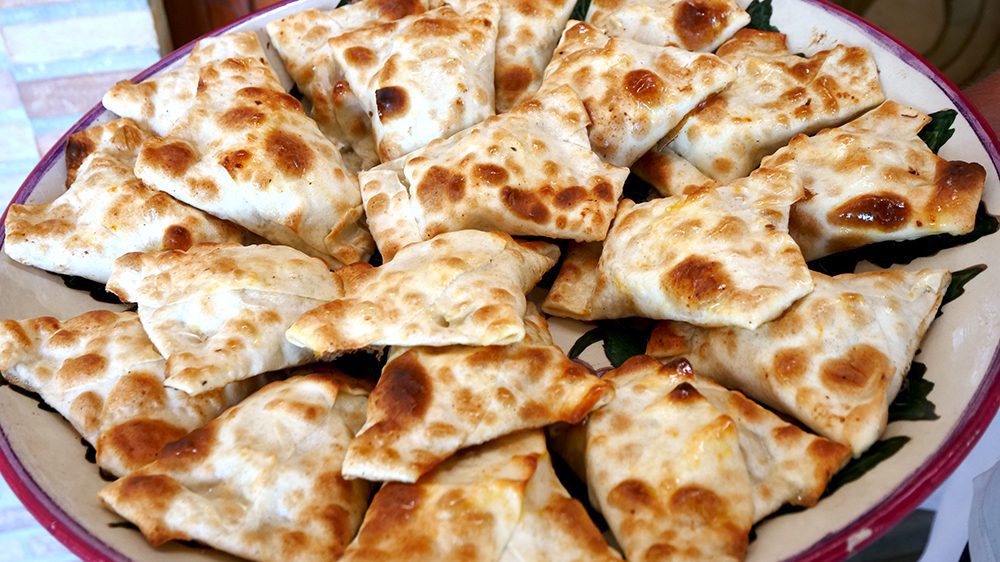
Another must-have at Lyabi-Hauz is the somsa, which is a popular meat-pie-like dish in Uzbekistan. These savory, buttery pastries are similar to Indian samosas or the emapandas you’ll find throughout Latin America, except they’re baked. This one contained delicious meat, juicy tomatoes, and its multiple layers was heaven on my palate.
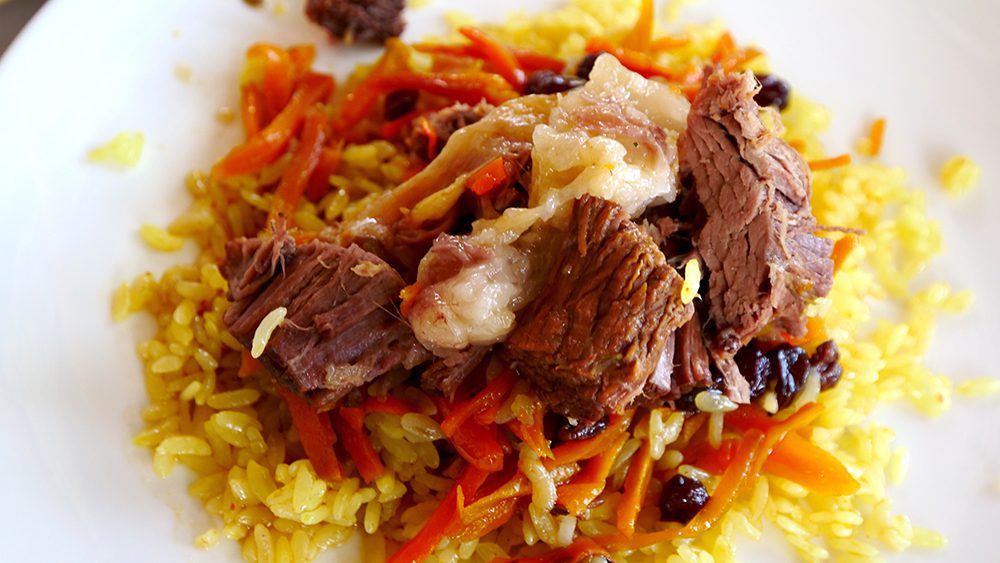
The lamb soup is another wonderful dish I suggest trying. It contains yellow carrots, potato, and big chunks of lamb fat, which adds lots of rich flavor. You also should not miss the national dish, plov. It’s a savory and sweet rice dish that contains lamb meat, yellow carrots, and raisins.

Eating at Lyabi-Hauz Restaurant is one of the top things to see and do in Bukhara for its lamb alone. My wife is Greek, so I’ve eaten lamb many times in my life, both at home and while traveling, so I don’t say this lightly. The lamb kebabs at Lyabi-Hauz are right up there with the best Greek lamb I’ve ever had. It was salty, fatty, and tender, with a nice char on the outside. It had my mouth watering from the jump!
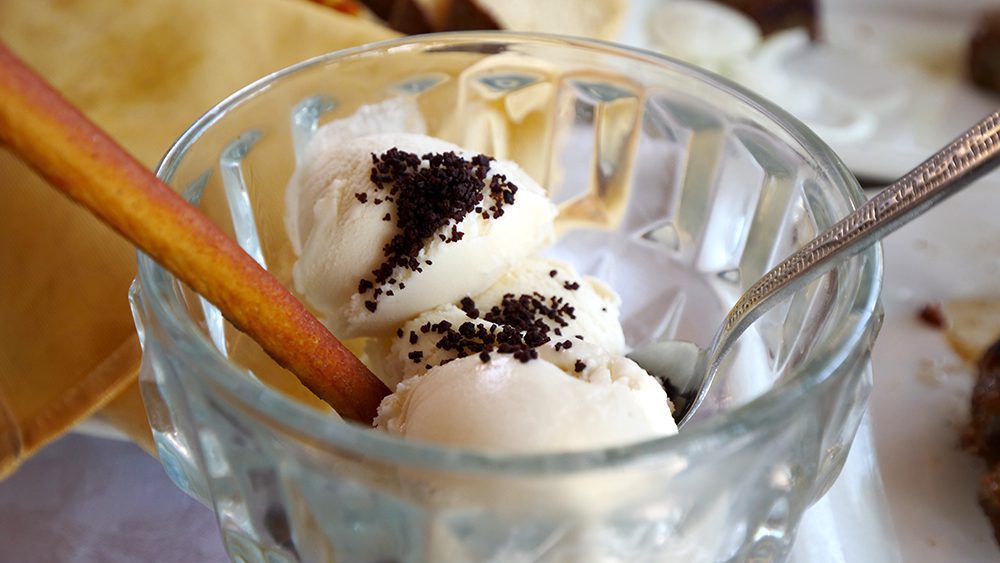
If you still have room in your belly for a dessert course, I suggest the vanilla ice cream. It’s served with a thin, crispy breadstick and is a smooth and creamy way to beat the Uzbek heat! It’s super cold, though, so you might get brain freeze!
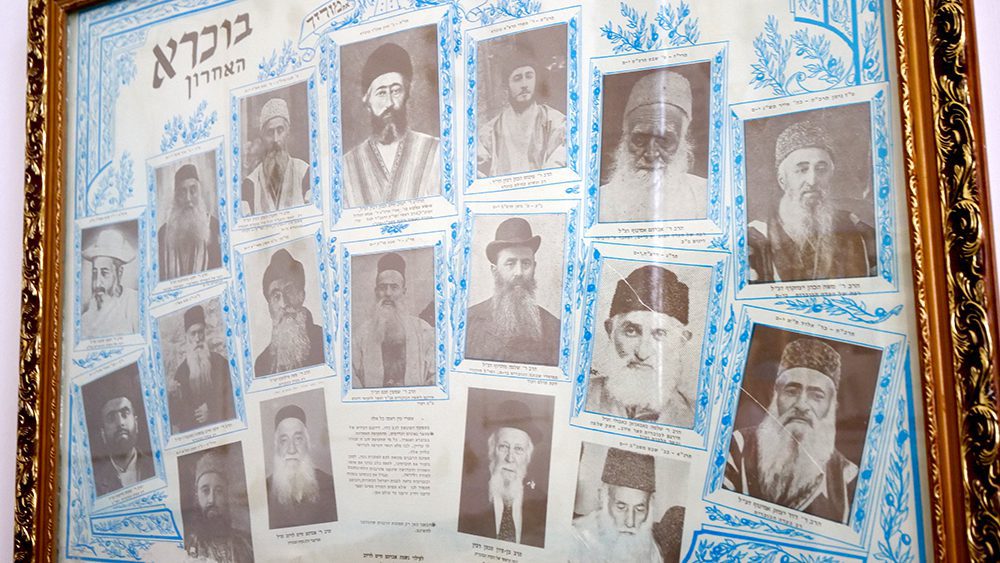
Hidden among the labyrinthine lanes and by-lanes of the Bukhara’s Old Town on Khusainova Street is Bukhara Synagogue, the oldest synagogue in the city. It’s actually one of only two remaining Jewish houses of worship in Bukhara. The city’s Jewish population has dropped drastically since the relaxation of Soviet emigration controls in the 1970s. Their numbers dropped even more after Uzbekistan became independent from the Soviet Union in 1991.
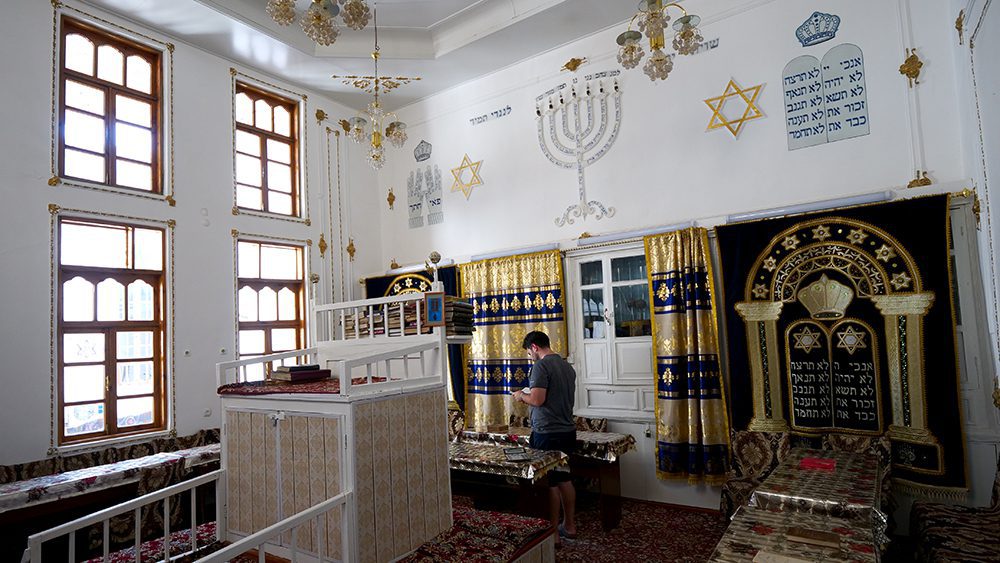
Despite the fact that only 300 Jews were left in the city as of 2010, the synagogue still stands proudly. Beyond the carved, wooden doors of this 16th-century house of worship, you’ll find a beautiful courtyard and chambers with 20-foot ceilings and intricate chandeliers. and Hebrew inscriptions, menorahs, and Stars of David on its walls. But the centerpiece of the synagogue is a 500-year-old Torah, which you’ll find behind embroidered black-and-gold curtains!
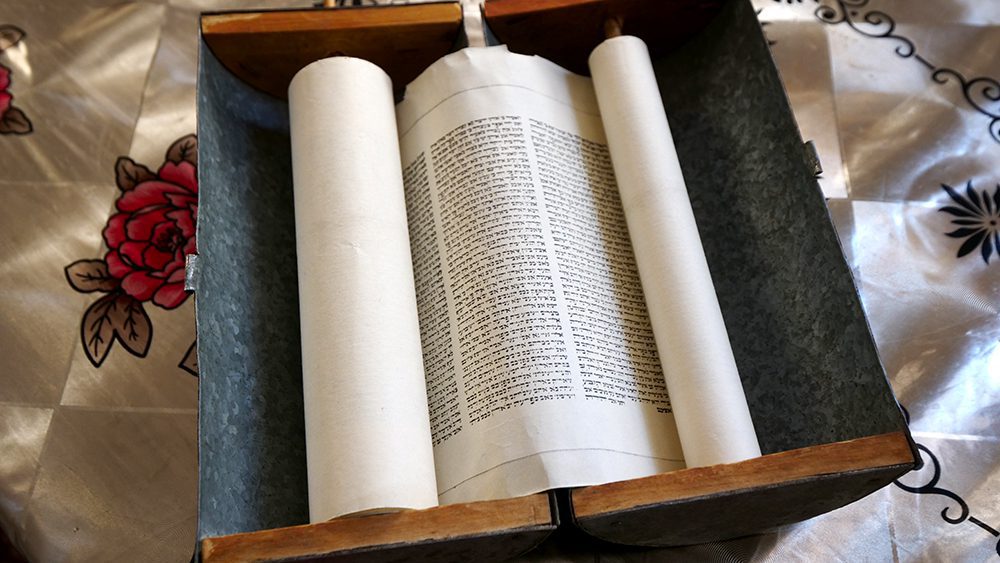
Regardless of your religious beliefs, this synagogue is a great place to gain an even greater appreciation of Bukhara’s history. Of the many things to see and do in Bukhara, this one is a must!
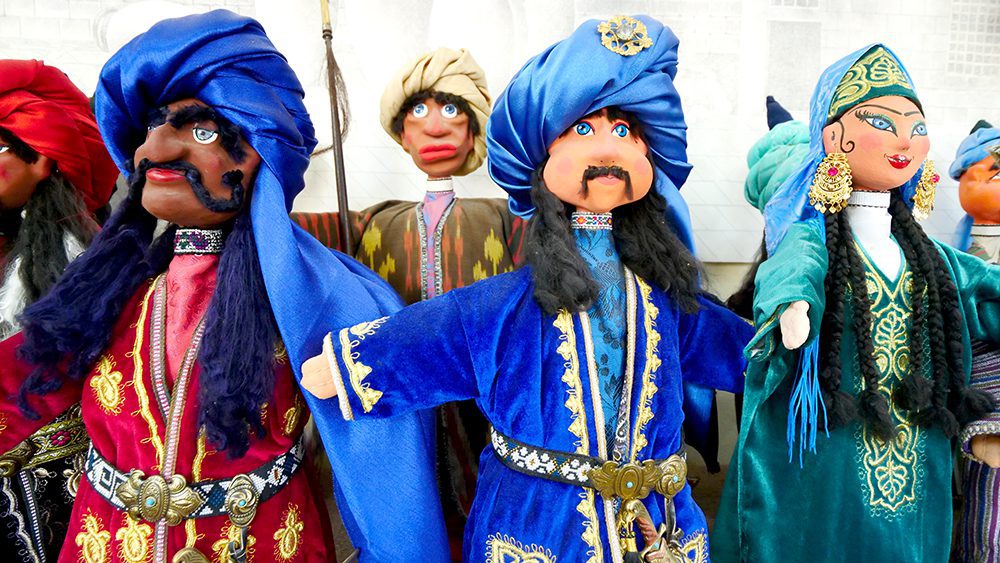
Speaking of amazing things to see and do in Bukhara, something that should be on every itinerary is the History of Bukhara Puppet Theatre. For many adults, the idea of a puppet theatre may not sound very interesting or exciting but trust me. It’s one of the best things to see and do in Bukhara! This charming establishment at 2 Centralnaya Street is part theatre, part workshop, part museum, and 100% entertainment.
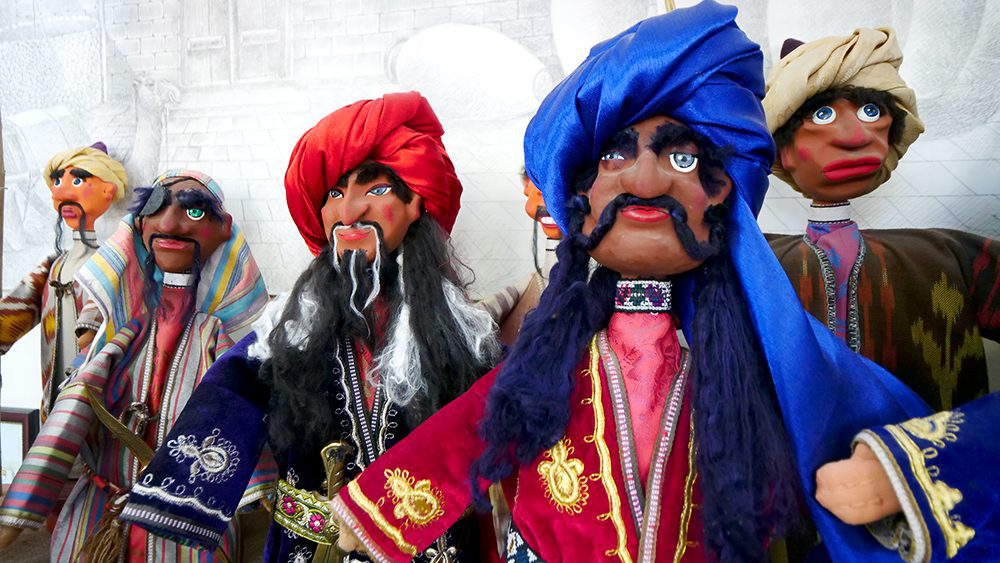
Puppet-making is an ancient tradition in the region and performances using puppets date back as far as the 1st century AD. The practice was effectively banned when Islam first took over the region, but was reinstated by the Samanids in the 9th century. Puppets were used to put on plays, share funny anecdotes, and even parody politics.
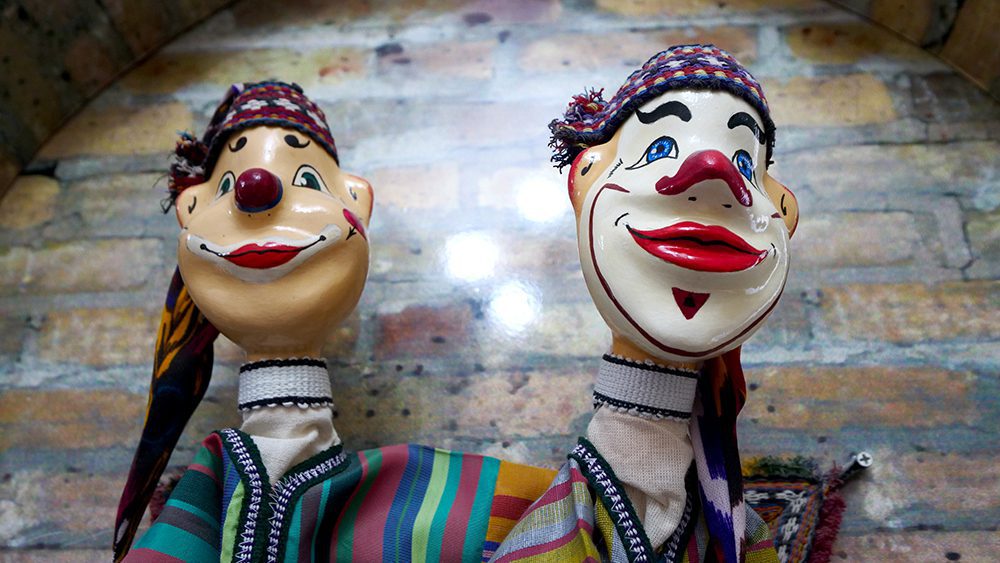
Not only can you explore the history of puppet-making at the theatre, you can also see how they are made. The lively owner, Iskandar Khakimov, will happily walk you through his process, with begins with a sketch of what he wants the puppet to look like. Then, they make a mold of the puppet’s head and craft it out of flour and water, like papier-mâché. The puppet is then hand-painted and dressed in traditional, hand-stitched outfits.
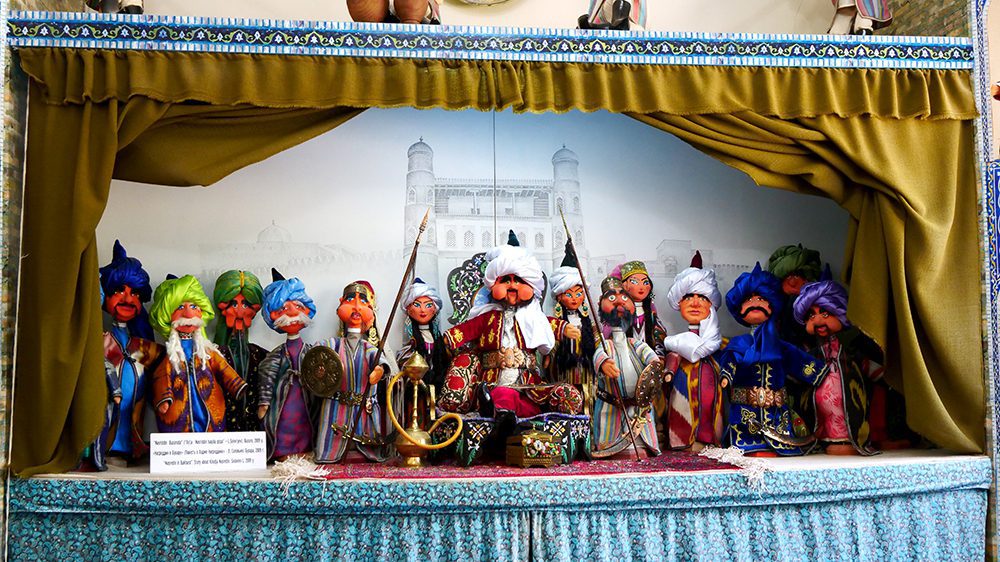
His puppets are arranged all around the shop, so you can get an up-close look at the painstaking work that goes into creating them. They’re both beautiful and quirky and observe visitors from the walls, shelves, and windowsills. There’s even a small, makeshift stage set up with several puppets inside it.
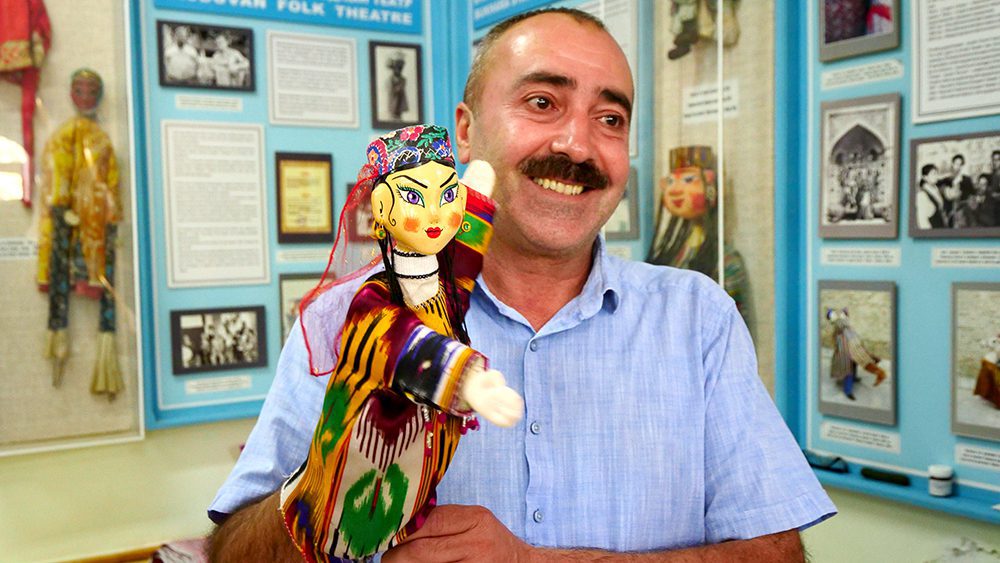
As you browse the museum, Khakimov may even show you how he makes his puppets dance to music! It’s a fun, amusing, and fascinating look into this beautiful, ancient artform. If you’d like, you can even buy a puppet, which range between 200,000 and 300,000 som (roughly $21 to $31 USD). You can buy a pair for 500,000 som, or about $52 USD. With the amount of labor that goes into making the puppets, these prices are bargains!

You cannot, and should not, visit Bukhara without learning about another traditional craft, carpet-making. Weaving carpets is an ancient practice, and the carpets created in Bukhara were hot commodities on the Silk Road. Centuries later, despite the advent of modern technology, the carpet-making process has not changed. To see the process for yourself, visit Bukhara Silk Carpets in the center of the Old City.

Inside, you’ll find a massive showroom where hundreds of carpets are on display. There, I got to meet a woman named Sabina, who explained to me that they make their carpets entirely by hand. They use two materials in their creations, silk and wool, which are naturally dyed.
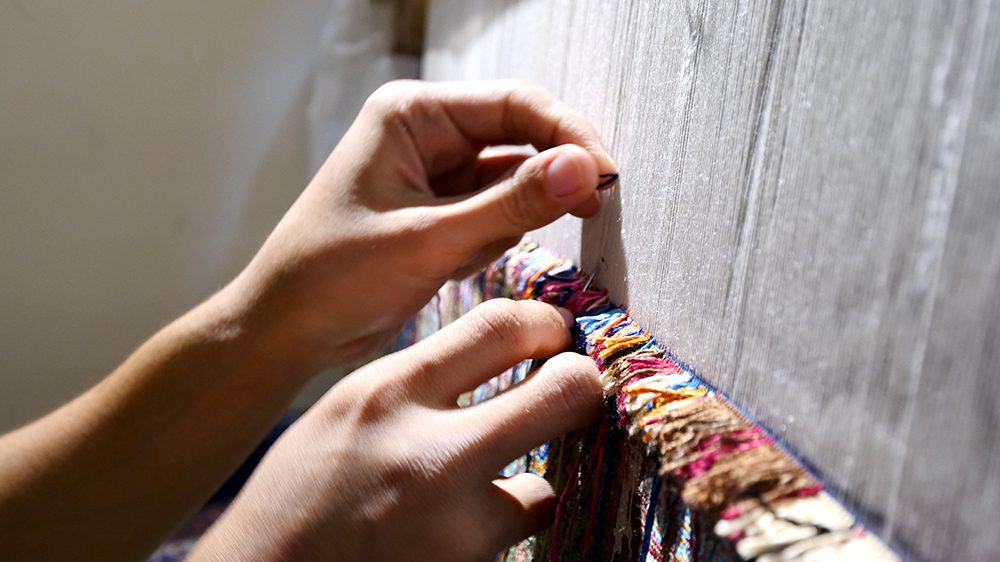
Roughly 40 women work there as weavers, though they have over 200 weavers in other workshops outside of the city. The weavers are young and range in age from 18 to their 40s. Beyond that age, it may not be good for their health, as the weavers sit on the floors and require sharp eyes and nimble fingers to weave their creations on their looms. It takes eight finger movements to make one proper knot on the loom!
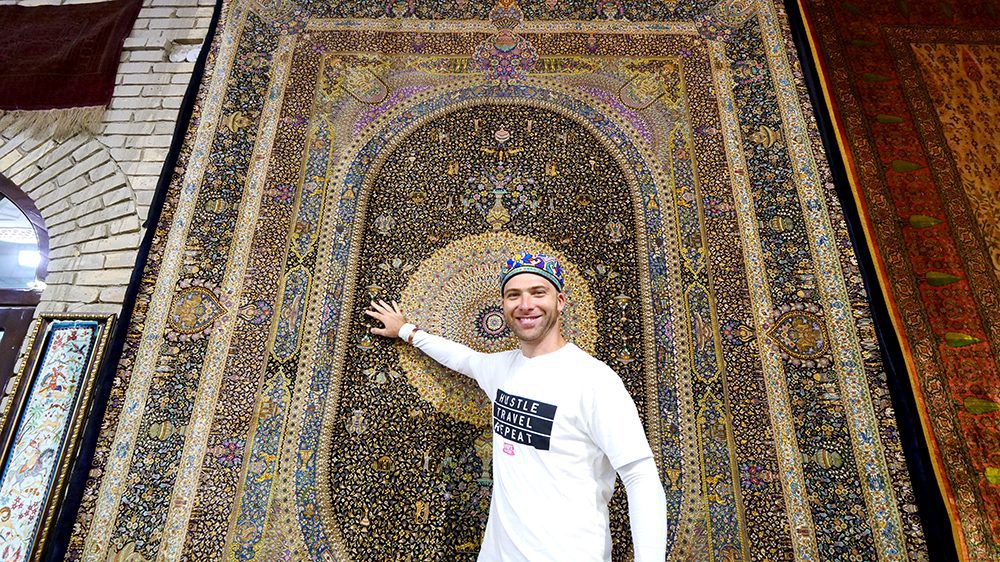
Some of the carpets are pure silk, while others are pure wool or a combination of the two. The wool is sourced from sheep, camels, and goats. As you might expect, the smallest wool rugs are the least expensive at roughly $100 USD each. Small silk carpets start at about $500 USD, and the most expensive carpet in the workshop is a massive, $78,000 creation!
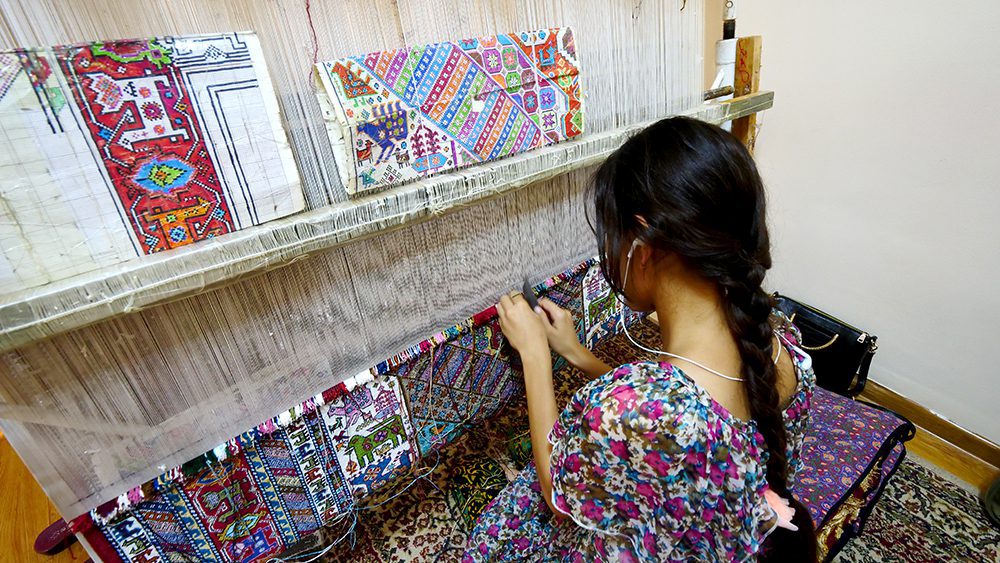
Like the puppets, they’re actually inexpensive when you consider the amount of time and labor that goes into them. But regardless of whether you buy a small rug or a large carpet, you know you’re getting a high-quality, one-of-a-kind traditional creation! Check out their workshop and see if anything there catches your eye. You can even purchase carpets from their online shop!
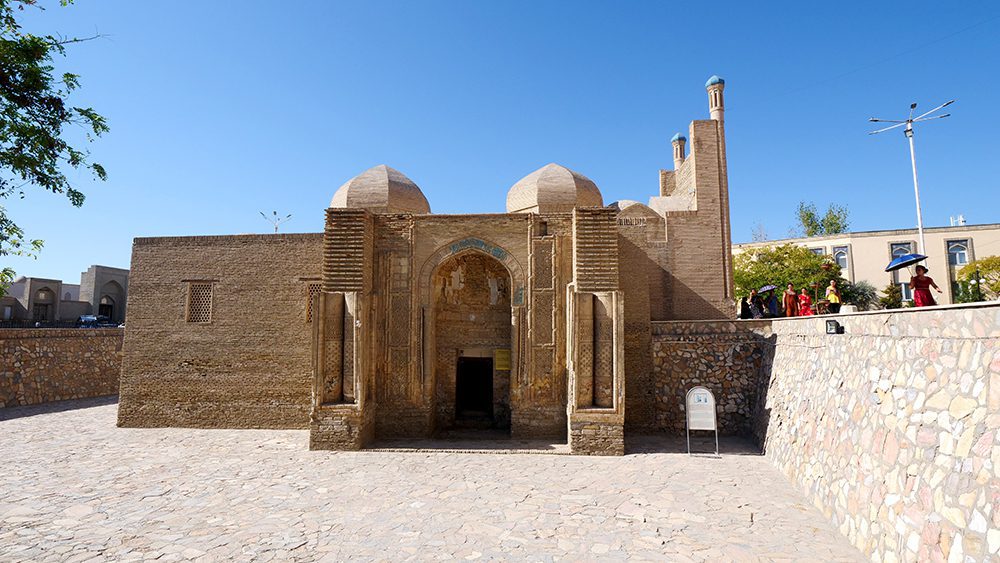
When you travel to an ancient treasure trove like Bukhara, not visiting its historical sites would be a crime. One of the best things to see and do in Bukhara is Magok-i-Attari Mosque in the historical center of Bukhara.
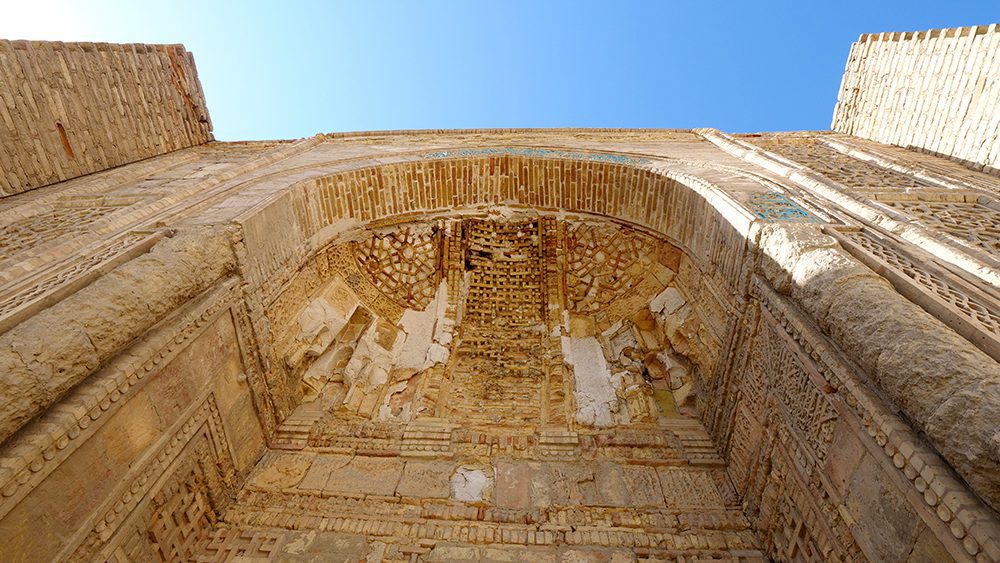
Magok-i-Attari Mosque is thought to have been built during the 9th and 10th centuries on the remnants of a pre-Islamic Zoroastrian temple. It gets its name because it’s a subsoil mosque that was built in a pit (“Magok-i” translates to “in the hole”).

It’s one of the oldest surviving mosques in Central Asia and is one of the few buildings in Bukhara that survived the Mongolian invasion. It’s part of a larger complex called Lyab-i Hauz, which also includes the Kukeldash Madrasah, the Khanaka of Nadir Divan-begi, and the Madrasah of Nadir Divan-begi.
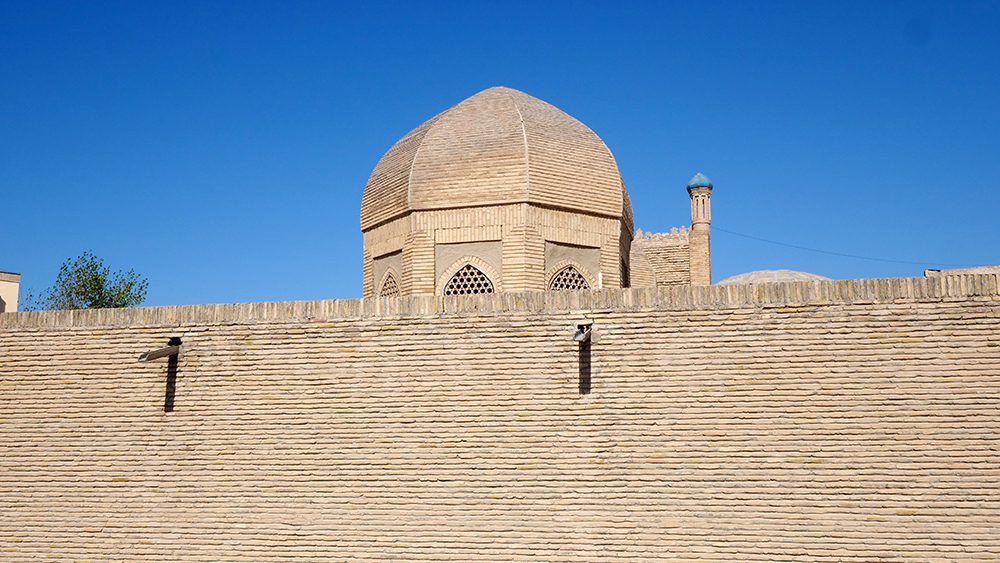
The mosque didn’t just cater to Muslims. Before the construction of Bukhara’s first synagogue, the city’s Jewish residents shared a space inside the mosque to pray. According to some, Bukhara’s Jews and Muslims may have even worshipped inside at the same time, but others dispute this and claim Bukharan Jews worshipped after the local Muslims.
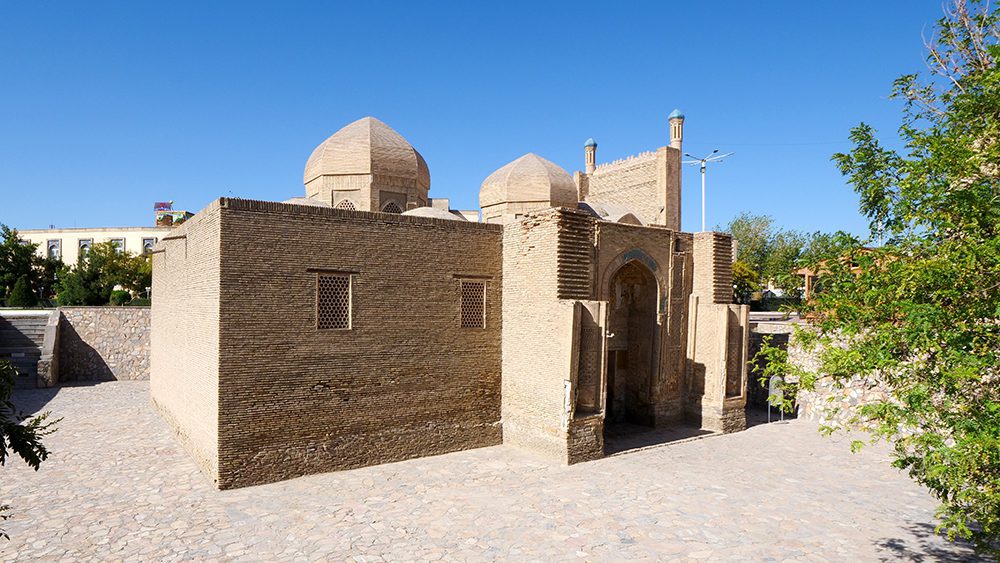
Today, the ancient mosque serves as a carpet museum. But in the past, the site where it now stands was once a market where vendors sold perfumes, idols, spices, and potions. You can feel the history just standing outside the mosque. Its exterior is worn but intricately carved, and parts of it have been noticeably restored. Even worn, it is breathtaking. I’ve never seen a mosque quite like it!
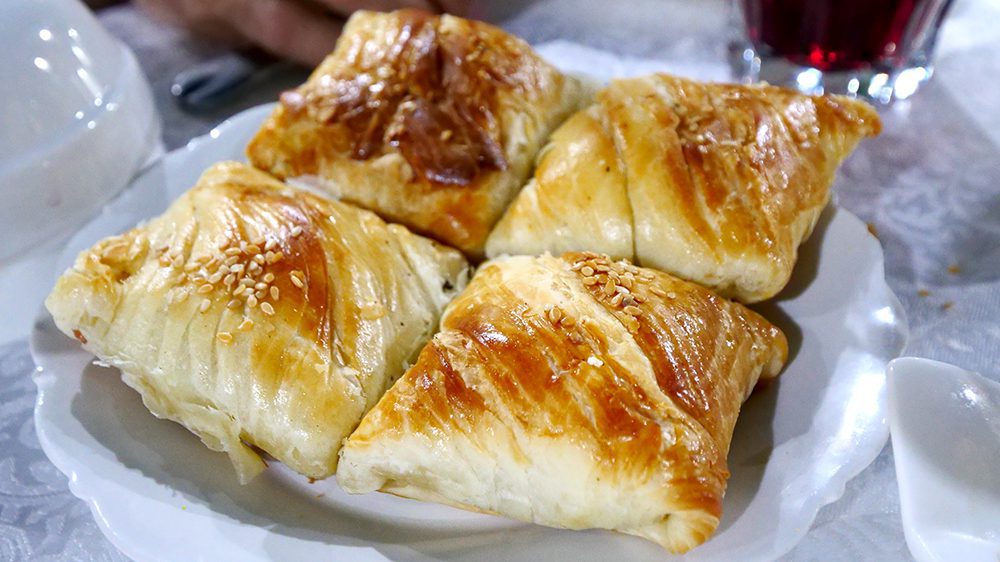
As I mentioned earlier, another site that makes up the historical and cultural complex known as Lyab-i Hauz is the Madrasah of Nadir Divan-begi. This beautiful, colorful building served as a school of Islam and was built in 1622. Visiting this historical building is among the top things to see and do in Bukhara and should be near the top of everyone’s must-do list!
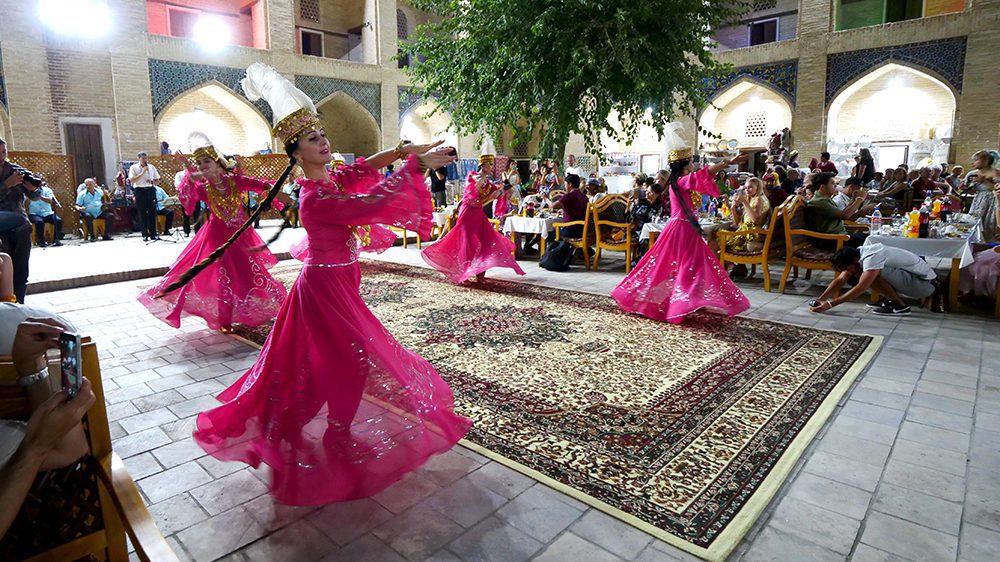
While I didn’t get to tour the madrasah, I did have the unique opportunity to have an alfresco dinner in its courtyard! My fellow travel content creators and I dined around 25 tables while traditional singers, dancers, and musicians performed around us. There were even quite a few vendors there!
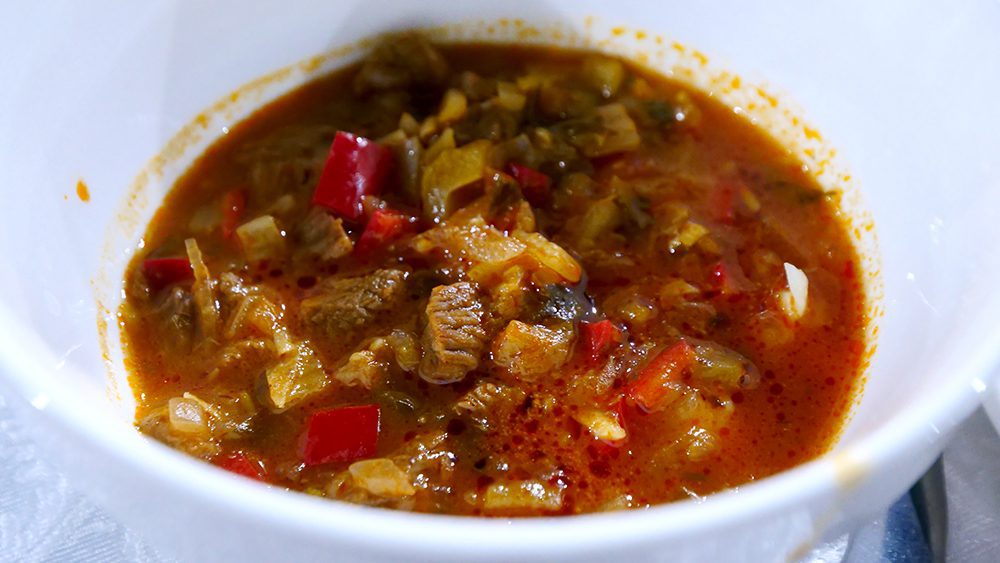
The feast we had was outstanding! It included a fantastic eggplant salad and a rich and flavorful Uzbek beef soup with vegetables and noodles. We finished off our meal with a stew served in a ceramic pot. It contained tomatoes, potatoes, and beef and was very tasty!
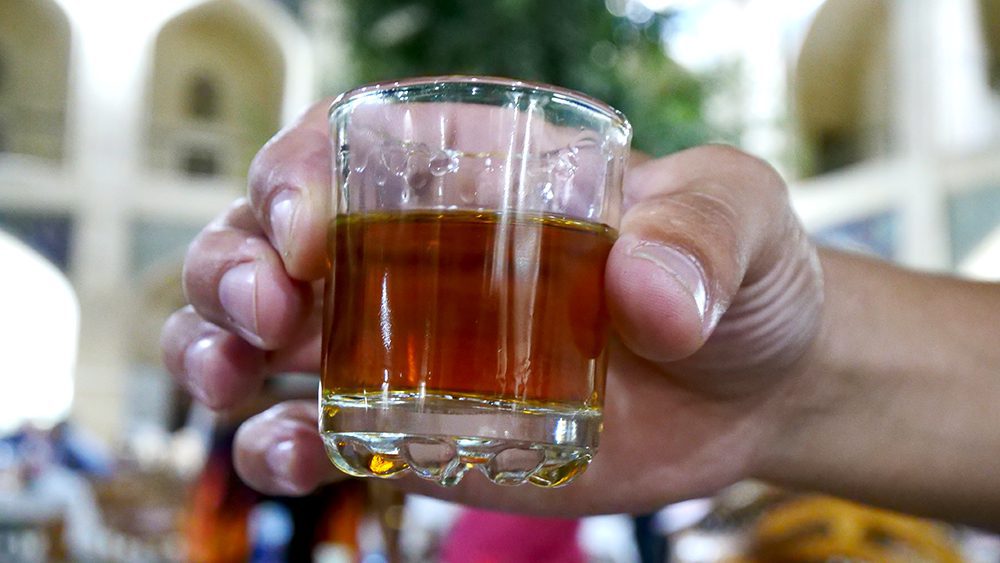
In-between courses, my fellow travelers and I bonded over strong Uzbek vodka shots and Bukharan cognac, and before the night was over, we had all flooded the courtyard and partied the night away with lots of singing and dancing!
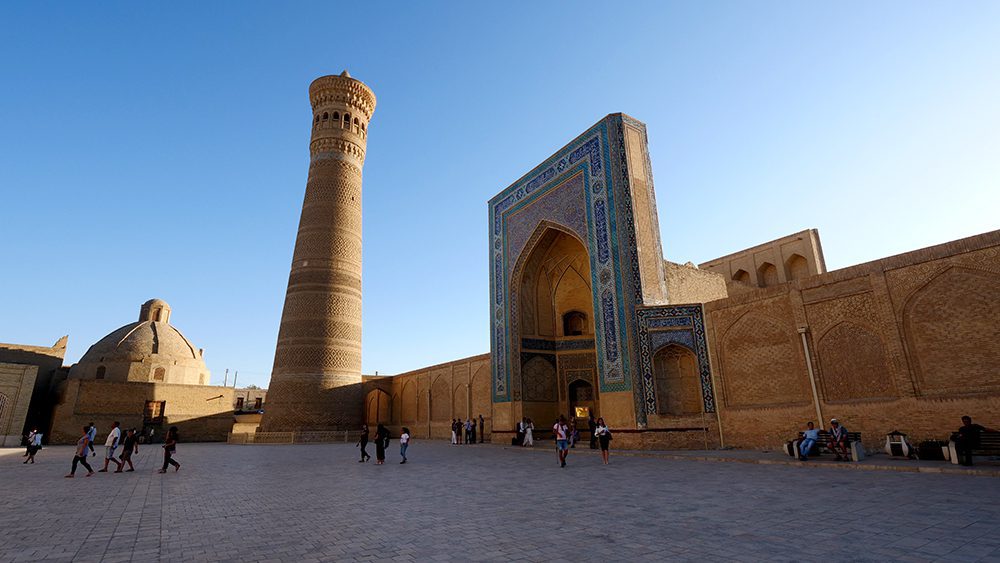
The next site you must explore when you visit Bukhara is the Po-i-Kalan Mosque Complex. Located in Bukhara’s historic city center, the complex is made up of three structures: Kalan Mosque, Mir-i-Arab Madrasah, and Kalan Minaret.
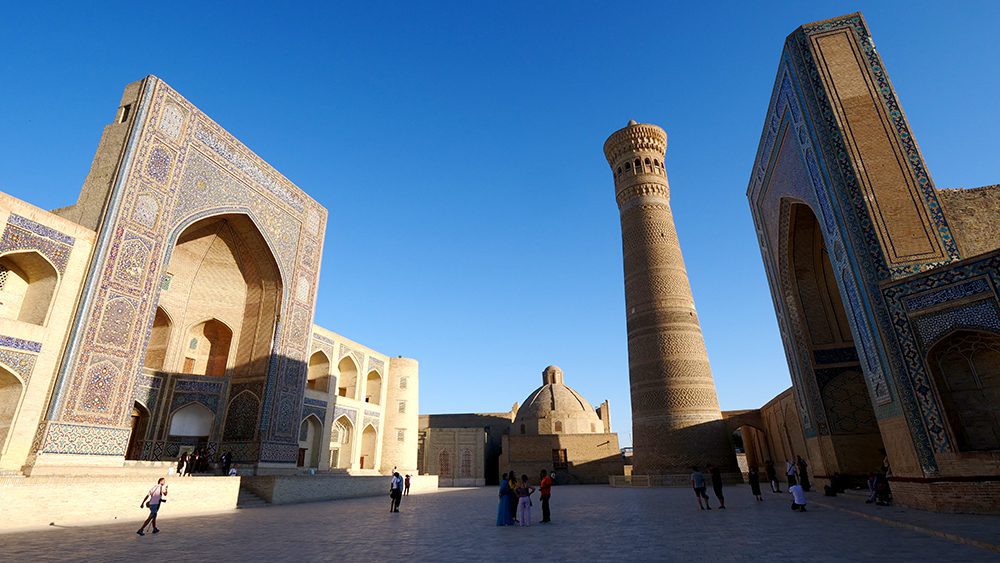
Many mosque complexes have been built in the general area over the centuries, including the Arslan-han complex. That complex was burned down by Genghis Khan during the siege of Bukhara. The Kalyan Minaret is the only building in the complex to survive the siege.
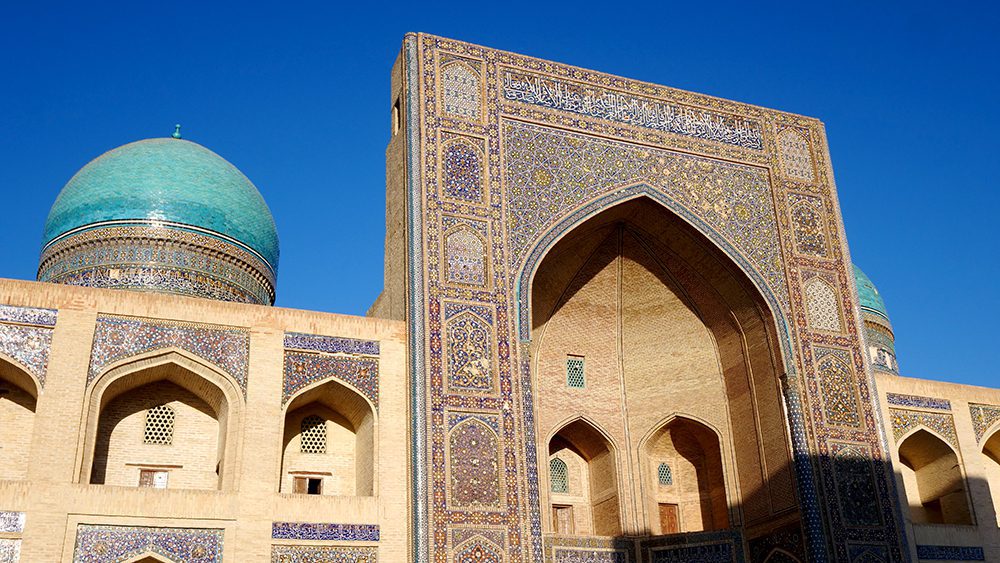
The Mir-i-Arab Madrasah was built from 1535 to 1536 by Sheikh Abdullah Yamani of Yemen, also known as Mir-i-Arab. He served as the spiritual mentor to Ubaidullah-khan, who funded the madrasah’s construction by selling 3,000 Persian slaves. Both men are buried inside the madrasah’s vault.
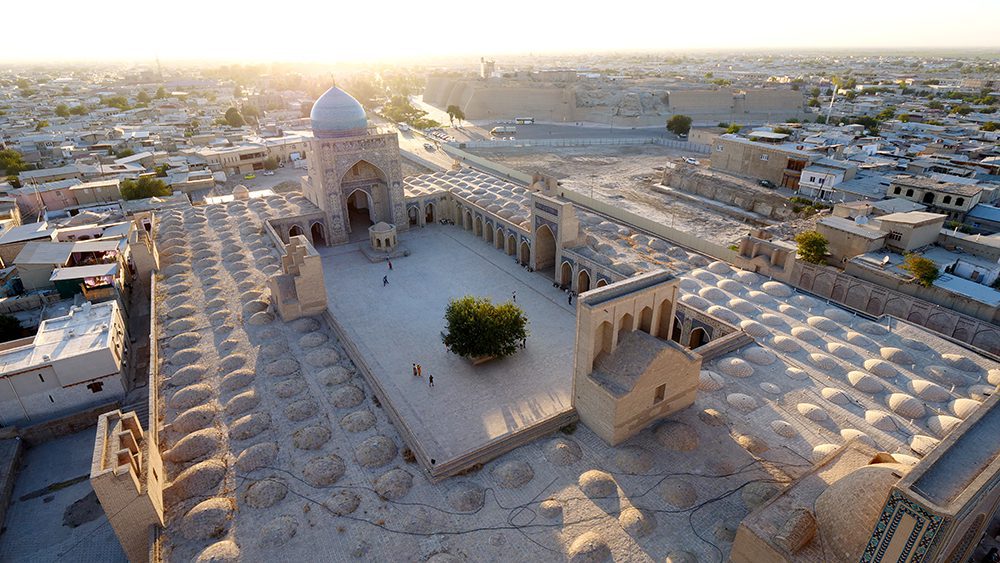
Kalan Mosque was completed in 1514 and is the same size as Bibi-Khanym Mosque, a mosque in Samarkand that is considered one of the largest and most beautiful mosques in the Islamic World. The galleries that surround its inner courtyard have 288 domes atop them, and the mosque itself is topped by a huge, blue-tiled dome.
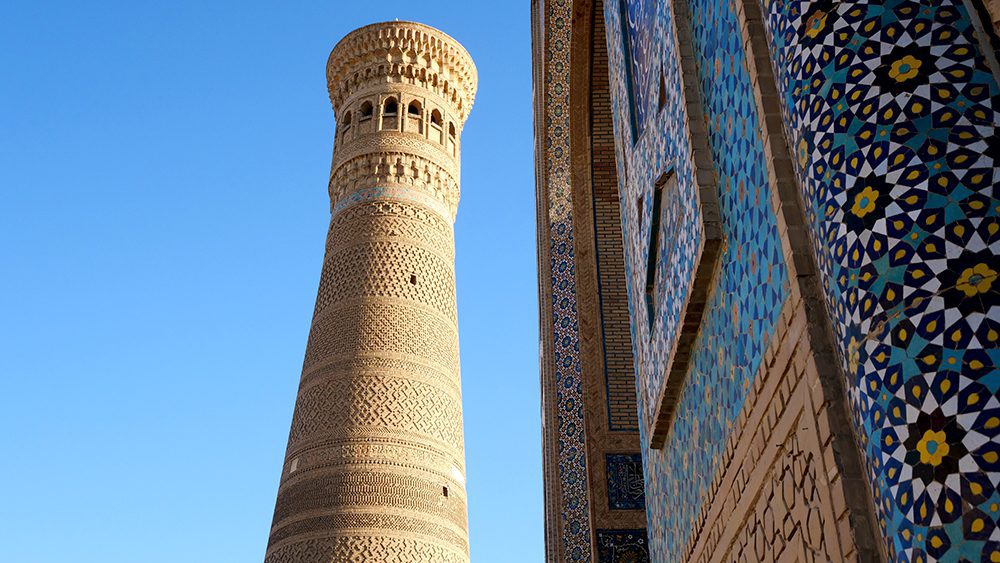
But arguably the most well-known building in the complex is Kalan Minaret, whose name translates to “Grand Minaret.” This massive structure towers over the city’s historical center and holds a dark history within its brick walls. Kalan Minaret also is known by its more ominous nickname, the Tower of Death, because criminals used to be executed by throwing them from the very top.
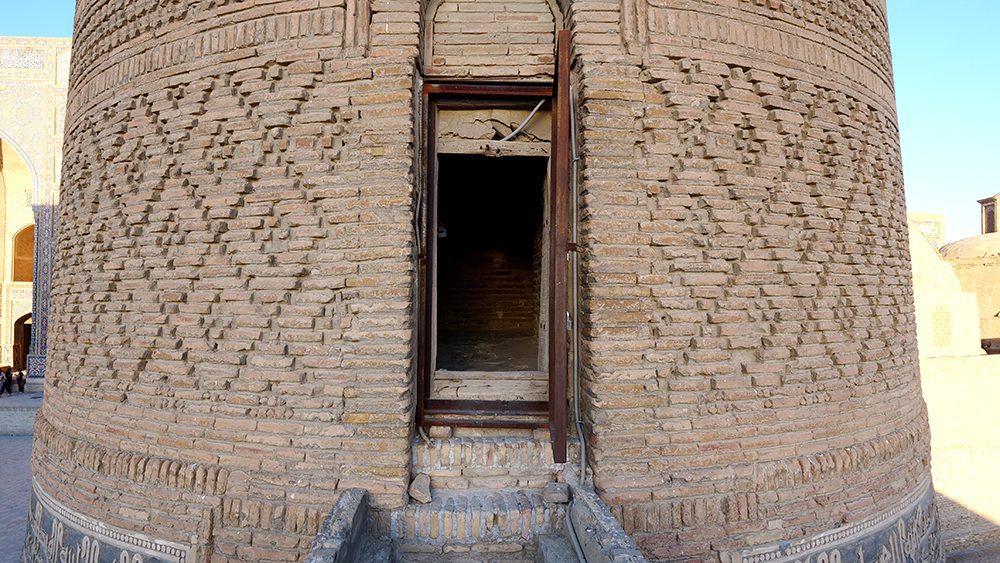
Traveling with the World Influencers Congress came with many perks, one of which was getting special government permission to climb to the top, which is usually off-limits to visitors. The inside of the minaret was tight and dark and the winding, wooden spiral staircase was extremely steep.
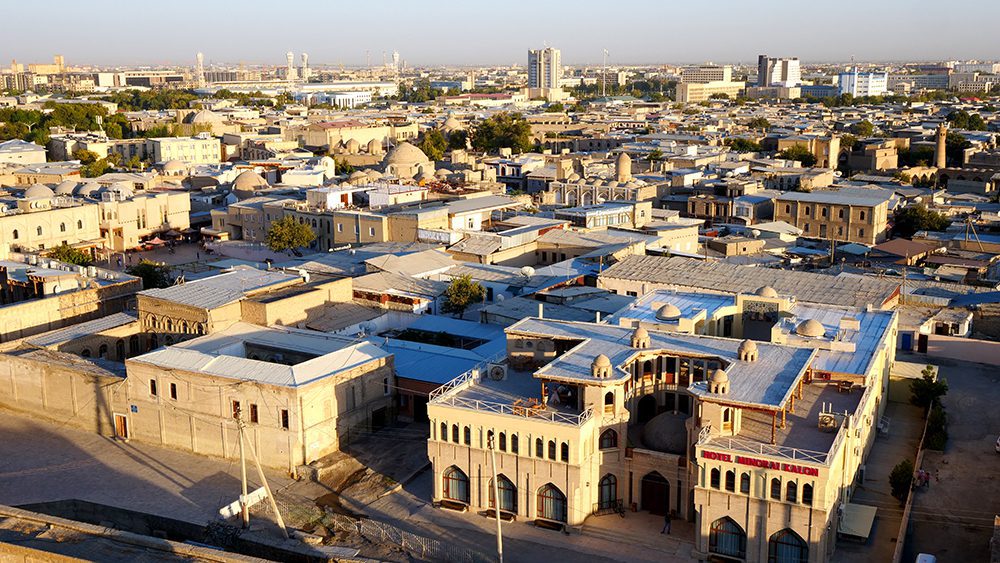
Climbing the stairs was intense, but the views that greeted me as I emerged at the top were well worth the effort. I had a breathtaking view of the mosque’s domed roof and madrasah. Even better, the setting sun bathed them in soft, golden light that made it even more beautiful. It’s the best view you can get of the city and was a stunning sight to behold!
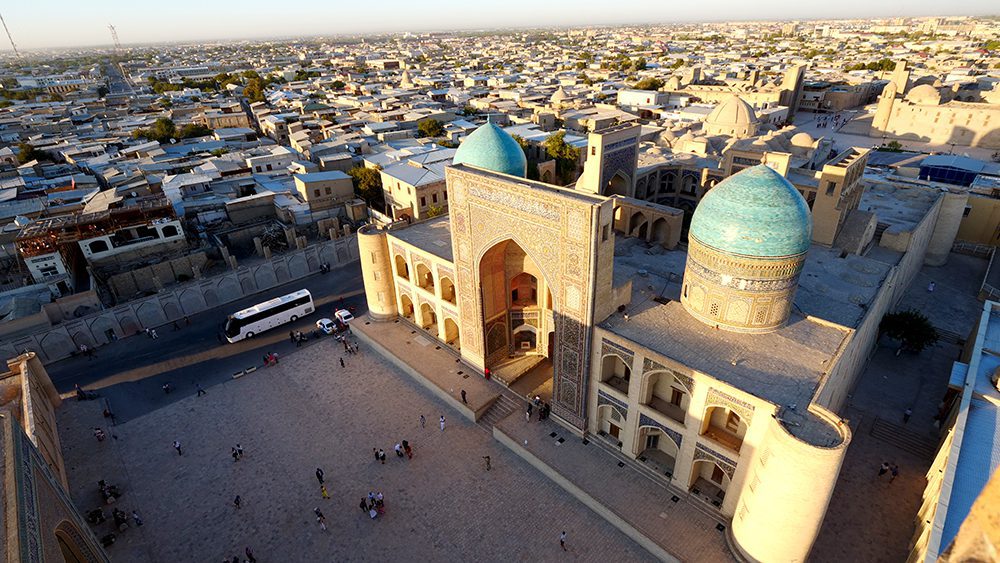
But even if you can’t climb to the top of Kalan Minaret like I did, visiting Po-i-Kalan Mosque Complex easily one of the most amazing things to see and do in Bukhara!
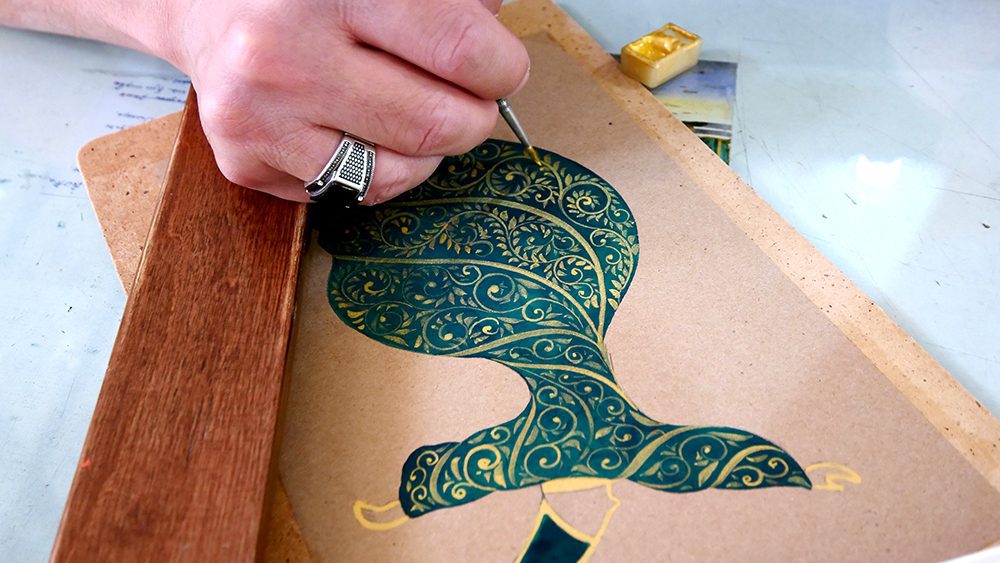
Besides its long, rich history, Bukhara is also famous for its equally long tradition of craft-making. Artisans in Bukhara work with a host of materials, including wood, copper, bronze, silk, wool, and more. One of the best things to see and do in Bukhara is to visit the artisans at their workshops and see the prideful and painstaking work that goes into creating the items they sell.
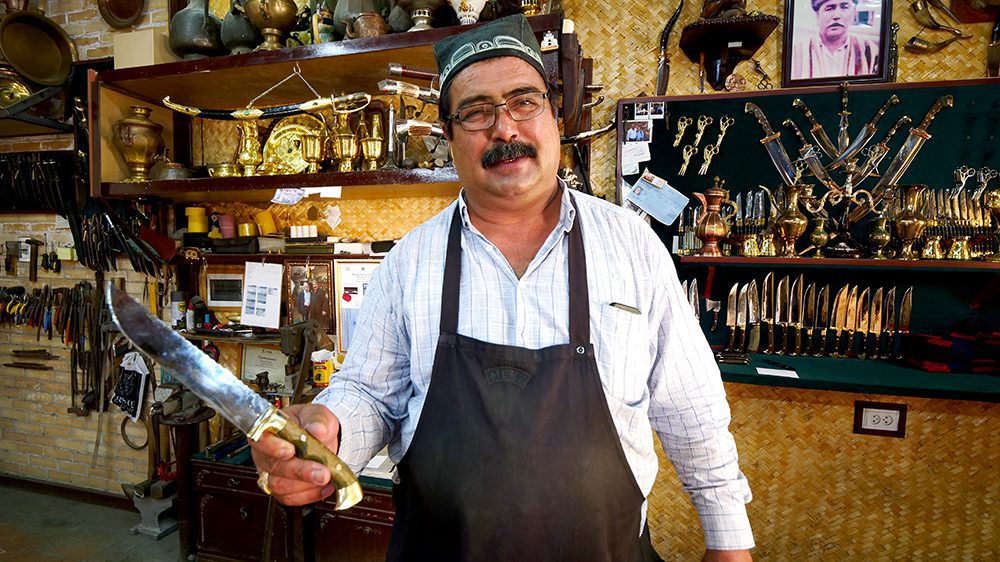
As you tour the city, there is no shortage of handicraft workshops to visit. The best thing about them is that you can buy their products directly from them. One of my favorites was a metalworker who makes intricate and unique knives and scissors in various shapes. One of his pairs of scissors is shaped like a bird, the symbol of Bukhara. For only 10,000 som/$10 USD, I bought a pair for my mother-in-law and got them engraved with her name!

From the weavers at Bukhara Silk Carpets to the vendors selling traditional, hand-made hats, it’s apparent when you visit that craftsmanship and quality mean a lot to the people of Bukhara. You can find everything from small, wooden animal figurines to vendors selling gorgeous paintings depicting the Silk Road and Marco Polo.
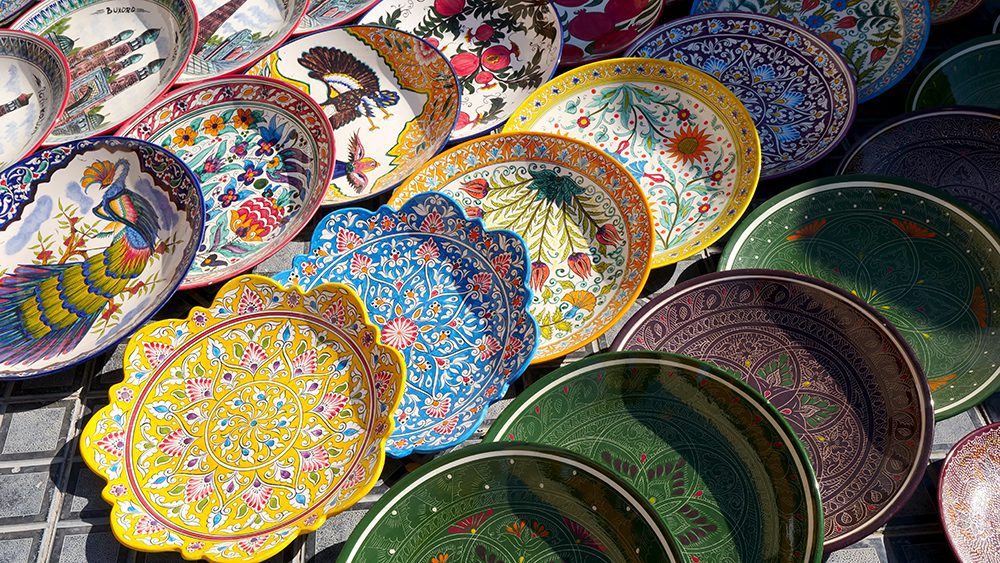
Another of my personal favorites was a man I came across who sold stunning, hand-painted ceramic plates that blew my mind. They were beautiful and were covered in ornate designs that must have taken hours. Yet, they were incredibly affordable, with most of them costing under $10 USD, while the largest were only around $15 USD.

You also should not miss an amazing craftsman who can be found directly across from Magok-i-Attari Mosque. This man sells incredible padlocks in the shapes of various animals. Browse his shop and you’ll find padlocks designed to look like fish, camels, owls, turtles, and more. He even sells door knockers in the shape of lion heads! A beautiful turtle padlock that only cost 400,000 som/$41.99 USD caught my eye, but I, unfortunately, wouldn’t have any use for it at home.
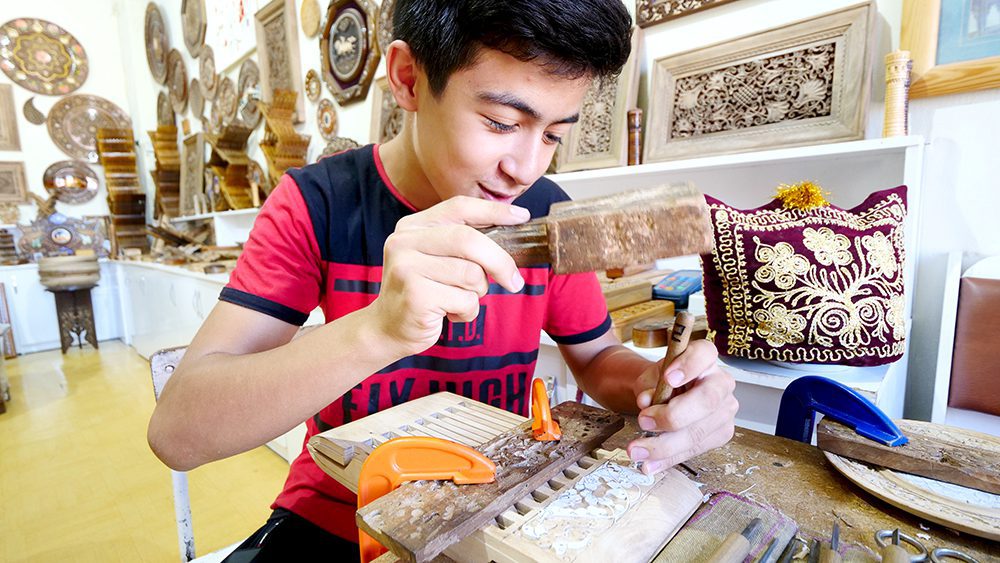
Earlier in my trip through Uzbekistan, I came across vendors selling handmade folding book stands. I found more in Bukhara, except these woodworkers also made beautiful plates, seats, and intricately-carved tables. One of the most beautiful tables in the shop cost 6.5 million som, or roughly $600 USD.
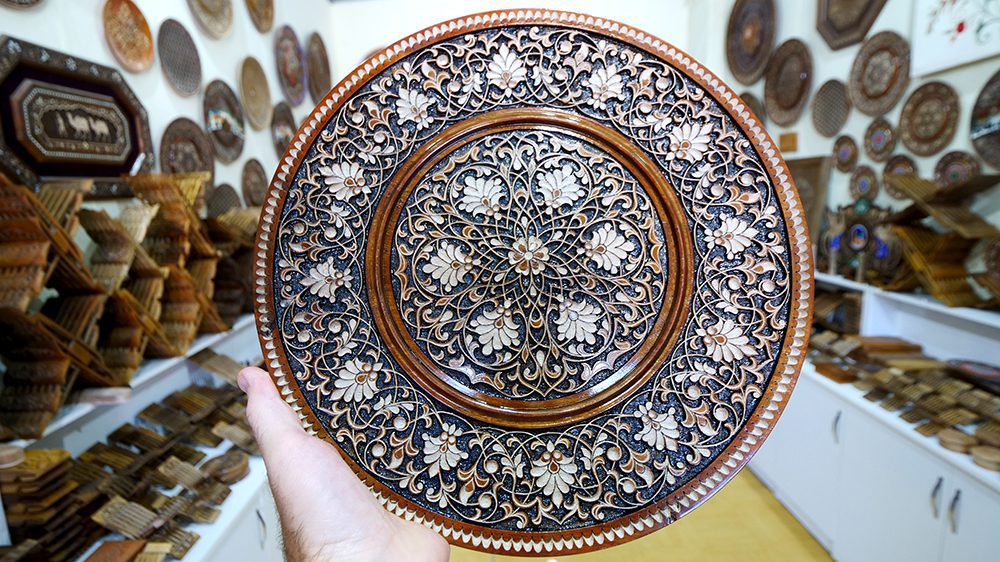
He had also created an incredible chessboard, which uses wooden minarets as the playing pieces. I was truly blown away by his creations, which reaffirmed my opinion that visiting the handicraft workshops is one of the best things to see and do in Bukhara.
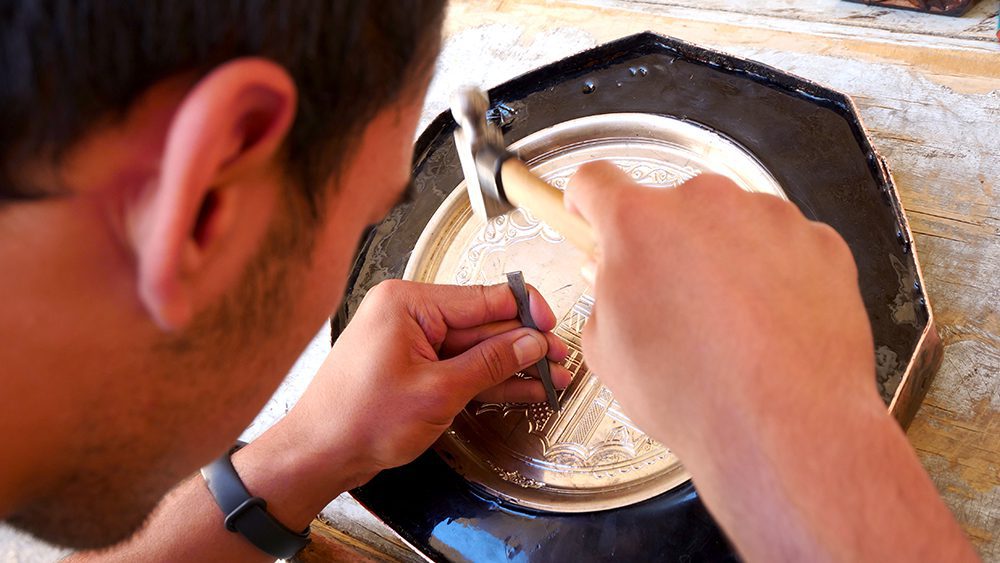
My last stop on my handicraft workshop tour of the city was the Artisan Development Center. In this center, where they make amazing decorative plates out of red copper and yellow brass. A lot of the brass and copper plates had stunning designs etched and painted into them, including winged horses, the Po-i-Kalan Mosque Complex, Arabic script, and more. In a sign of genuine Uzbek generosity, a very kind man there gave me one of his beautiful copper bracelets as a gift!
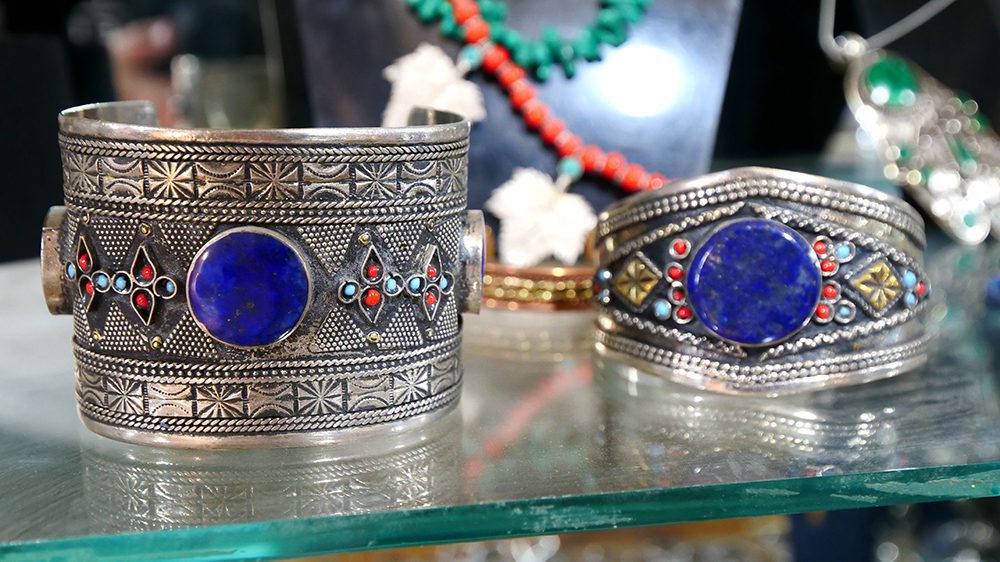
If you only do one thing during your time in Bukhara, make it a tour of the handicraft workshops. It will teach you a lot about the city and its people. I believe it will also give you a greater understanding of its history.
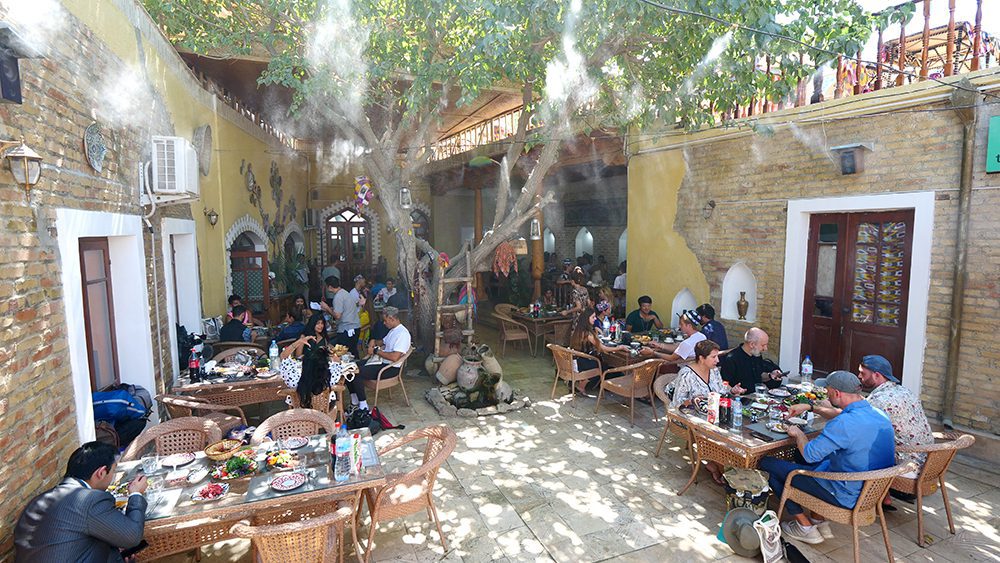
In addition to its marvelous historical sites and wonderful handicraft workshops, the historical center of Bukhara is also home to some amazing places to eat. One spot I recommend is Old Bukhara Restaurant. The restaurant has a pleasant atmosphere, with lots of tables in a courtyard with trees and more seating on terraces and on its roof. Adding to the ambience are musicians, who play traditional music as you dine.

I recommend starting with the salads and vegetable dishes, which are out of this world. You must try their remarkable eggplant topped with tomatoes. It reminded me of an Italian bruschetta! I also suggest the tomato-and-onion salad. Earlier in my trip, I found Uzbek tomatoes incredibly juicy. These were no different. There’s also fresh and moist salad made with string beans, chunks of tender beef, and chickpeas.
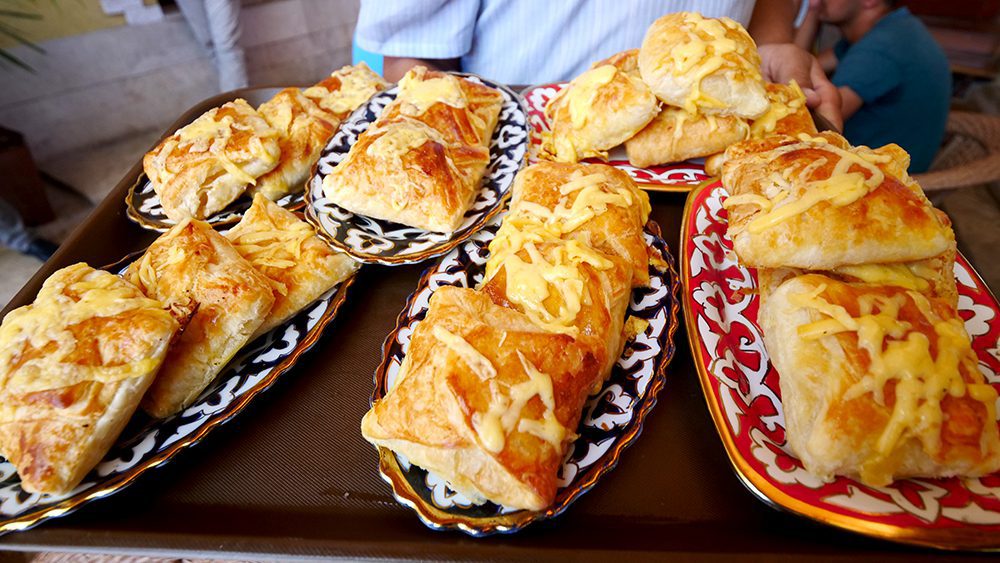
Don’t miss the bread stuffed with cheese and the mastava, which is a soup containing a flavorful combination of beef, rice, and vegetables. The rice absorbs some of the broth, making it even more flavorful. Add a dollop of yogurt to add some creaminess!
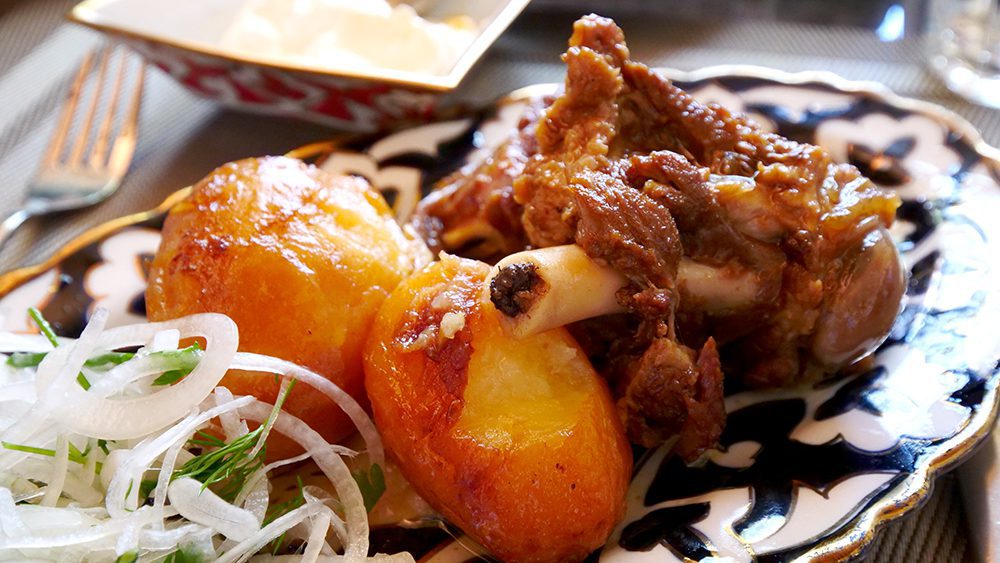
As I had learned earlier in my trip, Uzbek lamb is out of this world, so I had to try it again. This lamb came with potatoes and onion. The meat was so buttery and tender, it fell apart while it was still on my fork! I’m not exaggerating when I say it was the best lamb I’d had in Uzbekistan up till that point. Dining at Old Bukhara Restaurant is one of the best things to see and do in Bukhara for this lamb alone.
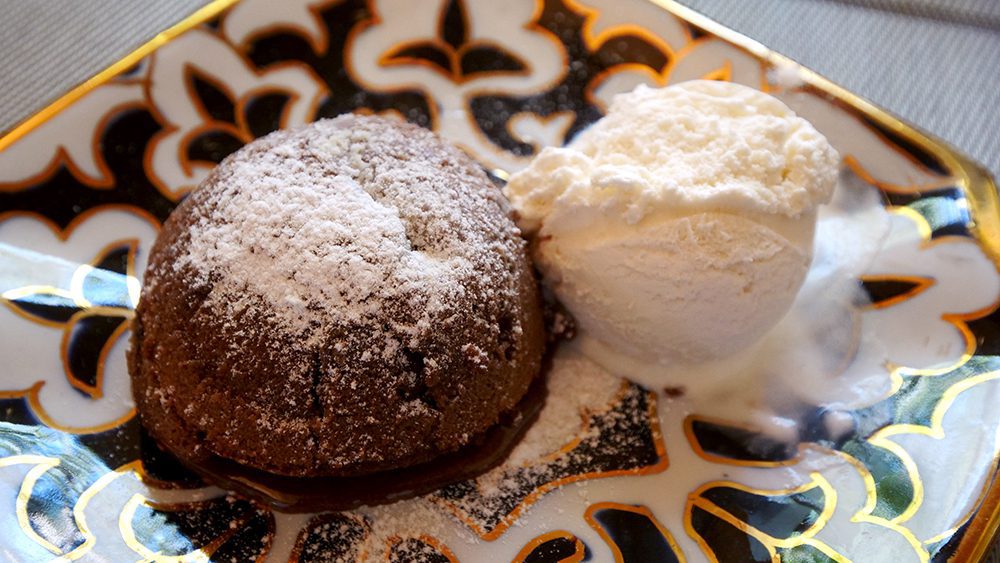
Enjoy your meal with some Uzbek white wine, which had a unique flavor I wasn’t used to, but it was exceptional. Wrap up with a chocolate souffle with vanilla ice cream. The inside of the souffle was like thick, tasty melted chocolate. It was the perfect way to end an exceptional meal!
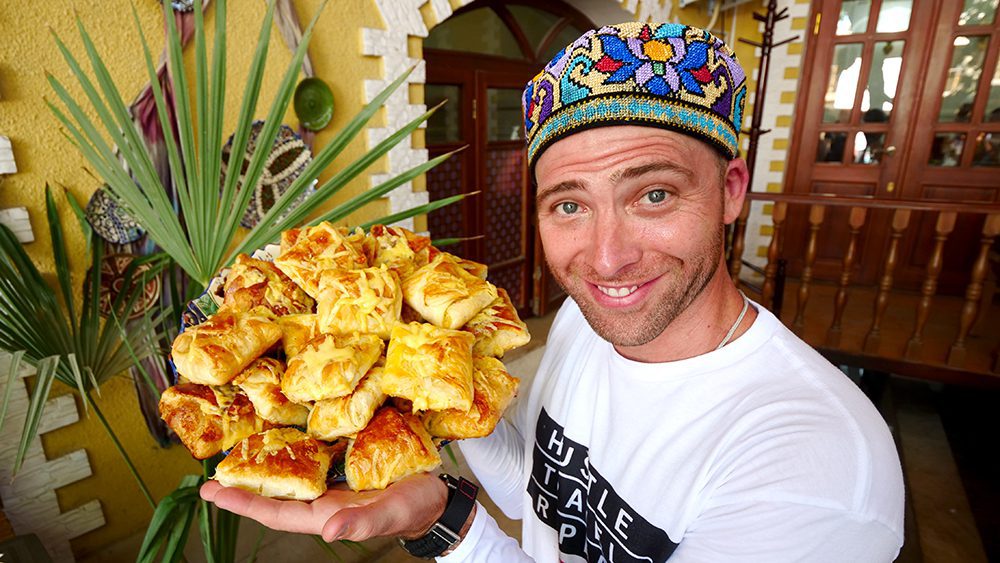
Bukhara is a city of wonders. Around every corner, there is something new to discover. A new site, brimming with fascinating stories from long ago. New workshops, filled with incredible people creating astonishing works of art. New, unknown flavors just waiting to tantalize your taste buds. It’s the kind of city any culture-, history-, or food-lover dreams of visiting. It certainly captured my heart during my two days there, and I’m sure it will capture yours, too. Book a trip to Bukhara today to experience its wonders for yourself!
NOTE: If you need to check the visa requirements of a particular country, click here. To apply for a visa, find up-to-date visa information for different countries, and calculate the cost of a particular visa, click here!
Counter
101 Countries • 1432 Cities